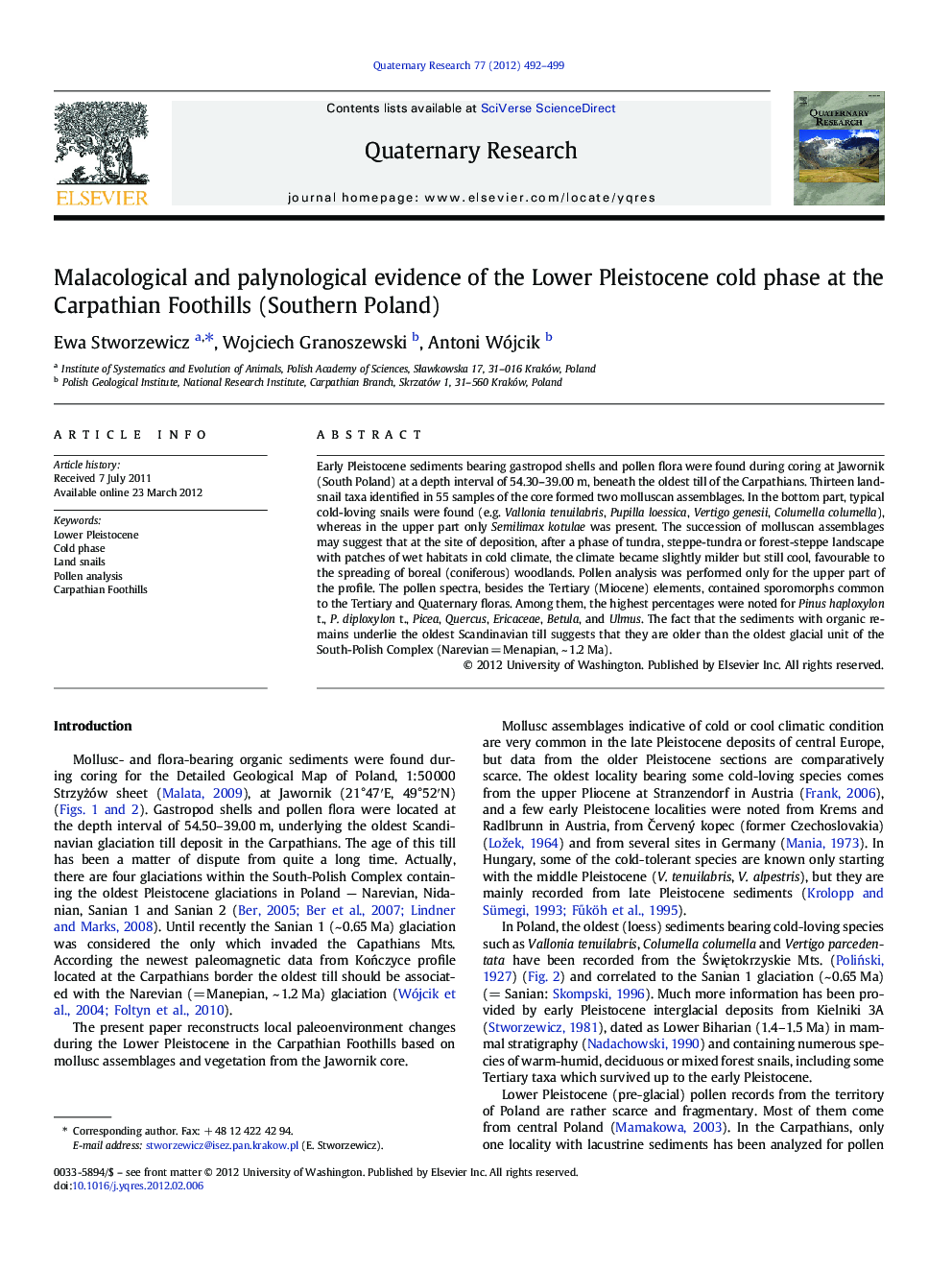| Article ID | Journal | Published Year | Pages | File Type |
|---|---|---|---|---|
| 1045748 | Quaternary Research | 2012 | 8 Pages |
Abstract
Early Pleistocene sediments bearing gastropod shells and pollen flora were found during coring at Jawornik (South Poland) at a depth interval of 54.30-39.00 m, beneath the oldest till of the Carpathians. Thirteen land-snail taxa identified in 55 samples of the core formed two molluscan assemblages. In the bottom part, typical cold-loving snails were found (e.g. Vallonia tenuilabris, Pupilla loessica, Vertigo genesii, Columella columella), whereas in the upper part only Semilimax kotulae was present. The succession of molluscan assemblages may suggest that at the site of deposition, after a phase of tundra, steppe-tundra or forest-steppe landscape with patches of wet habitats in cold climate, the climate became slightly milder but still cool, favourable to the spreading of boreal (coniferous) woodlands. Pollen analysis was performed only for the upper part of the profile. The pollen spectra, besides the Tertiary (Miocene) elements, contained sporomorphs common to the Tertiary and Quaternary floras. Among them, the highest percentages were noted for Pinus haploxylon t., P. diploxylon t., Picea, Quercus, Ericaceae, Betula, and Ulmus. The fact that the sediments with organic remains underlie the oldest Scandinavian till suggests that they are older than the oldest glacial unit of the South-Polish Complex (Narevian = Menapian, ~ 1.2 Ma).
Related Topics
Physical Sciences and Engineering
Earth and Planetary Sciences
Geology
Authors
Ewa Stworzewicz, Wojciech Granoszewski, Antoni Wójcik,
